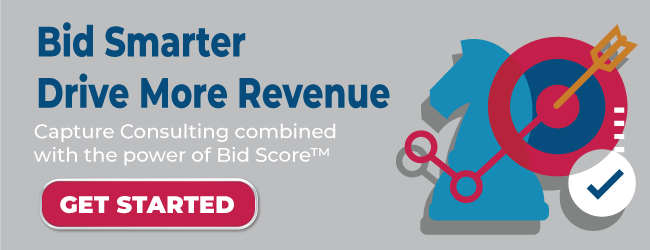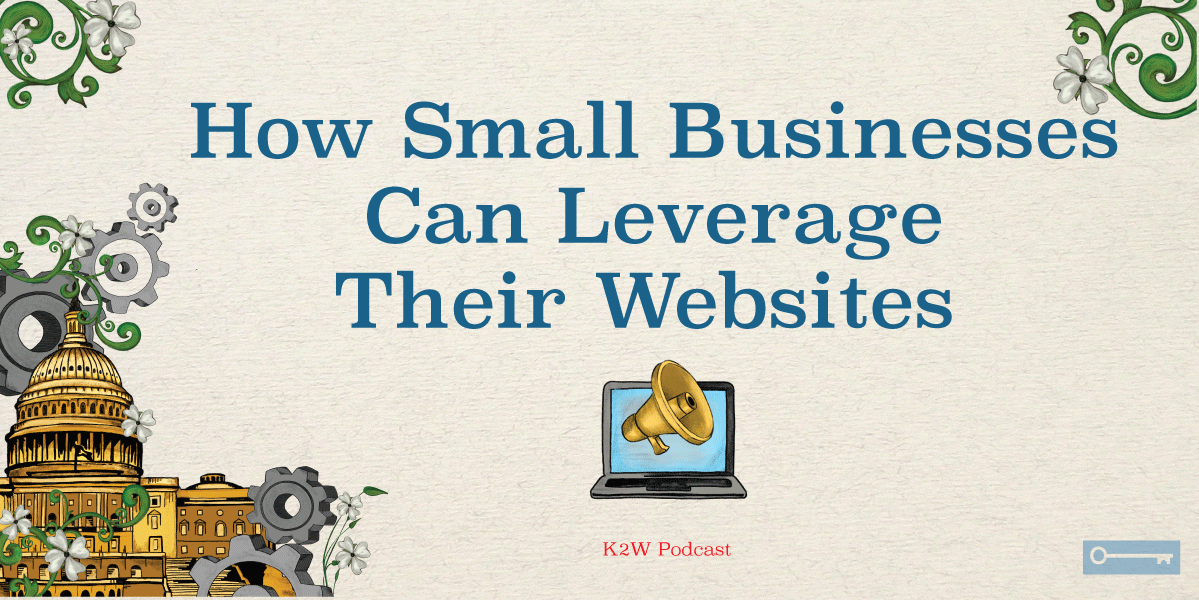Effective capture management helps you invest your resources wisely and maximizes your win potential.
In this episode, you'll learn about the components that make up a successful capture effort, including the capture manager's role, processes, and timelines. We also discuss opportunity qualification, "aspirational" pipelines, and safeguards for growing small businesses.
Guest: John Crowley, Capture Manager
Click the orange play button to listen to the episode. You can also listen on Apple I-Tunes or Soundcloud. After the episode, download our Capture Manager's Checklist.
Prefer to read? Here's the episode transcript with links.
Ray Thibodeaux: Welcome to Keys to Winning, a podcast where we talk about government contracting topics such as proposal development, business development, win strategies and more. Keys to Winning produced by Key Solutions, a leading bid and proposal development firm, gives you a chance to learn from leaders and experts in their fields.
I'm Raymond Thibodeaux, today's host of Keys to Winning. I'd like to welcome our guest John Crowley, senior capture services manager at Key Solutions. Did I mention that Key Solutions is expanding our capture service to include capture process development and training? Well, John is a big part of that effort. And if anyone knows the processes involved in making businesses grow, it's John, who's been at it for 25 years. So John, welcome to the podcast.
John Crowley: Thanks Ray. It's a pleasure to be with you.
Ray Thibodeaux: John, you've been a business development principal at LMI, a mid tier management consulting company, responsible for capture activities for federal civilian agencies including NASA and DHS, for SAIC you supported their capture work for Homeland Security and other civilian markets. At the small business, USIT, you help lead the company's efforts to deliver oracle solutions to federal agencies. I'm mentioning this to give listeners a kind of credential check. Obviously, you're an accomplished capture manager with broad experience in the federal marketplace.
John Crowley: Thank you.
Ray Thibodeaux: So just to level set the listeners, including myself. What do we talk about when we talk about capture services?
John Crowley: Sure. That's a great question, Ray. And pretty much at its most basic level, capture refers to everything that happens prior to the RFPs being released. And capture activities really focus on identifying, but really more importantly, I really want to emphasize it's qualifying opportunities to ensure that a firm that's in pursuit of something has the highest probability of win associated with it.
There are many components and sub components that go into defining what a firm's offering would be around a particular opportunity. And a really kind of a sound capture process helps them determine what they should be pursuing. It's a very disciplined structure, and it simultaneously keep stakeholders informed of the progress, but it also provides a clear path and a way of communicating needs that a team may have in order to secure the win and make things as strong as possible for their offering.
Ray Thibodeaux: From what you're saying, it sounds like in the capture management services your focus is on the far left side of the business development and proposal process. Meaning you set up the front end infrastructure, the people, tools and processes so companies can build a more targeted opportunity pipeline. Am I on the right track?
John Crowley: That's exactly right, Ray. You hit it exactly. Ideally, what you'd want to be able to do is to begin capture activities about 12 to 18 months before an RFP is released. So really further moving everything to the left in that business development life cycle. But during that time what you're really doing is identifying your customer's hot buttons, developing a solution that meets what their customer's issues are that you are trying to address.
You're strategizing also maybe about the type of teammates, if you need the team to take care of certain aspects of the work associated with it. Who can help you win with that? You can even start the process ... It's never too early to start the conversation around what key personnel you'd need to recruit and bring on to help you be successful with it. Now, that's in the ideal situation. Sometimes you may not have that much luxury of time before to really kind of run capture through its entire process before an RFP will be released.
John Crowley: But even if you don't have that much of a window, having a solid capture process in place, you can still follow the steps and really assess the viability of a particular opportunity thoughtfully. And certainly, if your firm doesn't have a structure in place around capture, that's something that we can kind of partner with firms, and we've been doing that already, to help them define what a capture process should be, and even helping implement one, and even running a couple of deals through the process initially as well.
Ray Thibodeaux: Yeah, it does seem like such an essential process for companies that have it in place. We've seen companies shoot at nearly any opportunity that moves. That's an exaggeration of course, but in some cases it's not by much. Should companies have a kind of litmus test, maybe a checklist of must haves to qualify the kind of opportunities they're pursuing?
John Crowley: Yeah, absolutely. And I know it can seem tempting on a certain level, to be honest with you, to kind of grow by going after everything that's in sight. Particularly, if a firm is trying to establish their presence in the federal space. But I personally, I really believe, and I've seen it work, that a firm can still be aggressive with the growth strategy and have a clear focus with some boundaries around how they're growing. And again, that's where kind of having a neutral objective catcher process and evaluation will kind of help you get through those points. Basically, what you need to ensure to go after anything, that you have a targeted laser like focus, that what you're pursuing you have a greater chance of winning. So that for example, you have the right qualifications and past performance, and certainly capabilities and an understanding of the customer's environment that you'll be able to talk to it in a coherent manner that will kind of be compelling, so that when the evaluation boards are reviewing your proposal responses, they would want to kind of select you.
John Crowley: And I think sometimes ... We can talk about this a little bit further too. But a great initial strategy for some firms is to kind of grow where you are. If you have a great strong client base within a couple of agencies right now, unless it's a very small firm that has limited capabilities, in most cases there are abilities to kind of grow into near adjacencies in a place where you have a solid reputation and a strong name to kind of trade on. So, I think that's certainly great place to kind of begin, so that you have a more targeted approach. And again, certainly we can help provide you, any firm that's interested, kind of a series of checklists and some objective criteria to apply against a deal, to ensure that you're assessing the opportunity correctly and that it's not just a very broad brush approach, but that's very targeted.
Ray Thibodeaux: So, do the questions that a company asks itself as it pursues these opportunities, are they roughly the same from one company to the next?
John Crowley: Yeah, the items are usually objective and similar across the board. What may change is how you answer some of those questions. So for example, the level of intimacy that you have with a particular agency may be different from agency to agency. The capabilities that you're providing, are they what that agency is in particular interested in getting? Have you done due diligence on the front end from a BD process before it gets to capture, to really ensure you have a clear understanding of what the customer, their drivers are. So it's kind of very important information that can really kind of then be used to feed the process later on in additional steps in capture. And then certainly during the proposal phase as well.
Ray Thibodeaux: Often we see companies, usually small or mid sized ones, that don't have a well-defined sense of their core capabilities. Some companies define themselves by what they want to be rather than what they are. And their pipeline tends to reflect that. Probably isn't good for the proposal win rates, but is it the usual or necessary growing pains of businesses trying to expand their capabilities, or just grow period?
John Crowley: Yeah, that's a great question. And I've seen many aspirational pipelines, as I've caught them over the years. And again, I mean I think everyone who's in this space, without a doubt categorically wants to grow. But I think it's important to grow in a structure and environment that you're going to ensure the greater amount of success. So, what I've always tried to do, and I've talked about this with firms that I've worked with as well. Is to really kind of focus, if you want to kind of tier opportunities in kind of three certain areas. Certainly the first one being is, what are your core capabilities and places where you're selling today? So for example, if you have just for argument's sake, a contract at GSA, and a contract say at IRS, what are you selling into those agencies? What differentiates you against your competitors? And more importantly, what would your current customers say about your performance? That should really drive what you're focusing on in terms of looking at opportunities and looking to grow from there.
John Crowley: And candidly, I would focus growing again within GSA and IRS, for example, because you already have an established presence there, and a known brand and quantity that you can build from, from that perspective. So, if you're looking at opportunities and you see those core capabilities, again for the same agencies, I would go after that all day long, and certainly provide your resourcing appropriately to kind of ensure you're going to do the best you can to win those opportunities. If you're looking at opportunities and they contain your core capabilities, but say for example, there's one or two different elements, SOW elements, or different types of work that you have not performed, I'd still take a hard look at those as well too. And here's what I would do. I would focus, in that case, bringing on a team member or a partner, a teammate, who can maybe help you with those areas where you currently don't have the capability or past performance for what the customer's looking for.
John Crowley: Again, I'd be very laser focused in terms of finding a partner who has experience and history working with the particular agency that you're looking at, and that they have, again, quantifiable test performances around that capability. Because all that will help you to do is round out your final offering in that RFP. And then the benefit of all that, certainly as the prime contractor, you are able to kind of claim that work as part of your past performance. Even though you have a partner doing it, you've now been exposed to it, you're managing it, you're overseeing what that work is. Ideally you can have a resource or two helping out in there, and you can slowly grow that organically. And then I'd say the last area where you want to focus, if it's something that's brand new, say for example it's a capability that you don't have today, but it's something that you really believe in, you want to pursue, or you believe that it's important enough that you want to kind of understand how the market reacts to services in that area.
John Crowley: Again, I mean you can put it in your pipeline and you can certainly pursue it if you desire to do that, but I would be very cautious about how many resources you apply to that. Opportunities like that tend to be ... Sometimes you hear the phrase like Bluebirds, or kind of things like that, things that you have, or top-ups, things that are maybe not within your core capabilities but you still want to put a response in. You don't ever want to rob your resources away from one of your base is, in terms of looking at your core capabilities and those core capabilities plus new opportunities. So again, I think it's a formula that can help folks grow. I've seen success across all the board with folks trying different variations of all these three different ways of looking at opportunities.
John Crowley: But I know I'm sounding like a broken record, but I bring it back to having a solid capture management process will really help any company or firm prioritize and evaluate each opportunity neutrally and objectively, so that you can then determine ... It then becomes a business decision if you want to pursue something, and then you can provide the appropriate resourcing that you need.
Ray Thibodeaux: And that's interesting. We had done an earlier podcast on the plight of mid tier businesses, which kind of leads me to the next question about, we know that there's a steep drop off in federal and other supports when companies grow out of that small business category.
John Crowley: Mm-hmm (affirmative). Yeah.
Ray Thibodeaux: I've seen firsthand some companies are reluctant to make that leap. You've experienced capture development for small businesses. Is that something they should bake into their pipeline? Controlling a company's rate of growth.
John Crowley: Yeah, well first of all, you're right that it's a hard bridge to cross when a firm grows. And you're almost being penalized for being successful in some ways. And certainly, any small business that's out there wants to grow. There's no question about that. But what I'd say, even moving even further left in the BD life cycle, really is kind of when it comes down to a strategy. And so, what I think it's important for any business to do candidly, not just small, is it's to really determine on a fairly regular basis, what is their plan for growth? Where do they want to be in the next three to five years? What about rapid growth? What does that mean from a corporate perspective? Great examples. So an RFP is released and the language is very clear that all of the personnel working on it will not be on the government side. They must be in a contractor facility. Well, reading that RFP, you're realizing that your FTE count is now going to grow by 15%. Well physically, where are you going to put those people? Do you have to get new space?
John Crowley: Things that need to kind of be planned for. And certainly the most important area that you want to ensure you're always kind of true to yourself on is your organization, your corporate culture. If growing is going to cause any encroachment upon who you want to be as an organization, then it's important I think to kind of ensure you put in some safeguards along the way to ensure that doesn't change.
I think looking at a strategic plan or a vision maybe every six months, and it requires senior leadership all the way up to the CEO level providing input and focus in that area, to really determine that this is the approach and the path forward that you want to pursue. There's nothing wrong, certainly with growing, and like I said, as long as you plan for it accordingly in a way that it's not going to be disruptive to your current workforce, or to how you have your infrastructure laid out, I think it's worth pursuing.
John Crowley: But just being very cognizant of how it's going to have an impact, I think is extremely important, and ensures that you continue to have a great retention rate of your employees.
Ray Thibodeaux: I feel like we're kind of scratching the surface of all that is capture management and capture services.
John Crowley: That's right. Oh my gosh, yes.
Ray Thibodeaux: If you could boil it down, what's the most common capture related mistake that companies make?
John Crowley: Oh wow. Okay. One mistake, and I will be very honest, I have seen this categorically across the board, regardless of business size. The biggest mistake I've seen is that firms will pursue a bid without having a strong customer intimacy. They don't understand the requirements. They have not been able to meet with anybody in the customer organization to understand kind of where their pain points are, and what solution they want to have in place. I will tell you there's nothing in a capture management strategy that can ever replace a thorough understanding of a customer's environment.
We can put in place all the processes to ensure that the deal moves through an objective and rational manner, that resources are applied and that you're following the right steps that you need to do in order to be successful. But that customer knowledge is tantamount to success. And without it, it can really determine a not strong outcome for somebody who's going after a bid. I completely acknowledge that it's not easy to get that information.
John Crowley: I know it's very challenging to try to get in front of the key decision makers. Sometimes it's even challenging just to try to talk with the contracting officials. What I have found, and it may sound rather basic and kind of trite, but it's honest truth, is just being persistent in terms of contacting, making any introduction that you can, being creative about where you can find those resources. Folks are on the talking tracks these days, they have their industry group breakfasts or luncheons, or something to that effect, wherever you can at least go and try to make an initial contact and then follow that up with as many meetings as you can get in order to understand the environment. First of all, it's only going to inform the rest of the processes in a better manner. So the capture strategy will be better. Your win themes for your proposal, and the why you should choose us section of a ... I mean, it's only going to be stronger the more customer intimacy you can get.
John Crowley: So, I know I just harped on that quite a bit, but it is very important and I know it's not easy to get, but without it you're not setting yourself up well for success longterm.
Ray Thibodeaux: What a good interview. Thank you, John.
John Crowley: Thank you.
Ray Thibodeaux: Oh, before you go, John, how do people get ahold of you in case they have any questions, or need to contact you for services?
John Crowley: The best way is, folks can go to our website, AOCkeysolutions.com. There's great information on there about the BD process, but there's also a way that you can kind of leave your information and request information, and we'll be happy to follow up with you.
Ray Thibodeaux: I appreciate it. Thank you, John.
John Crowley: Thank you.
Ray Thibodeaux: I'm Raymond Thibodeaux, and this has been Keys to Winning from Key Solutions Incorporated, or KSI. A consulting firm that has helped companies across the country win billions of dollars in federal contracts. Learn more at ww.aockeysolutions.com or follow us on LinkedIn. Be sure to subscribe for more podcasts in this series, and thank you for listening.
ABOUT KEYS TO WINNING:
Keys to Winning is a podcast that shares practical advice for GovCon professionals from industry experts. Topics covered include Proposal Development, Government Contracting, VOSBs, WOSBs, and more. Episodes are 15 minutes or less and are posted bi-weekly on Thursday morning. The podcast is hosted by Raymond Thibodeaux, a Senior Proposal Specialist with Key Solutions.







